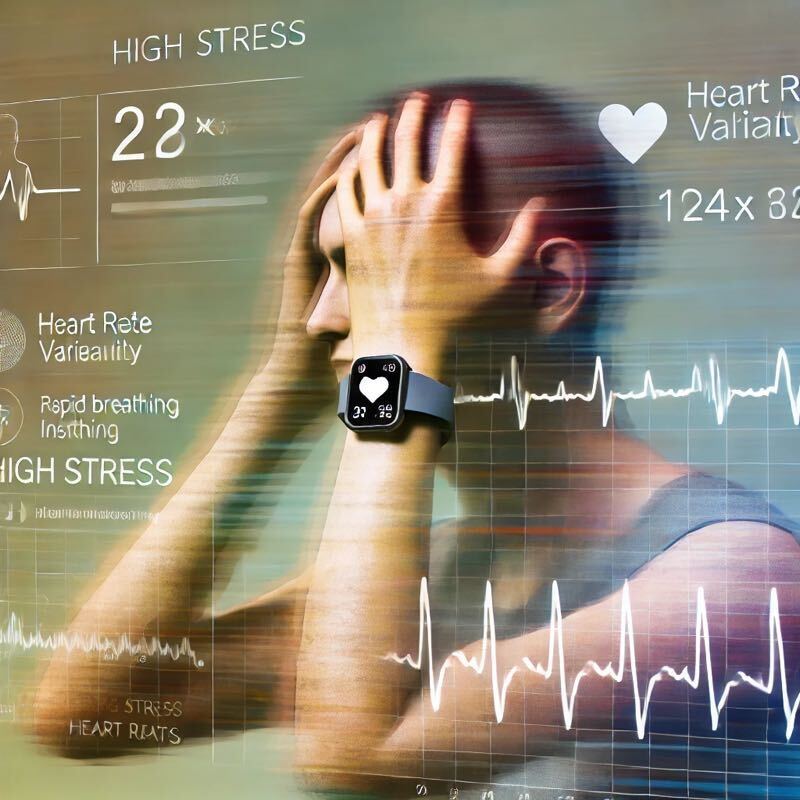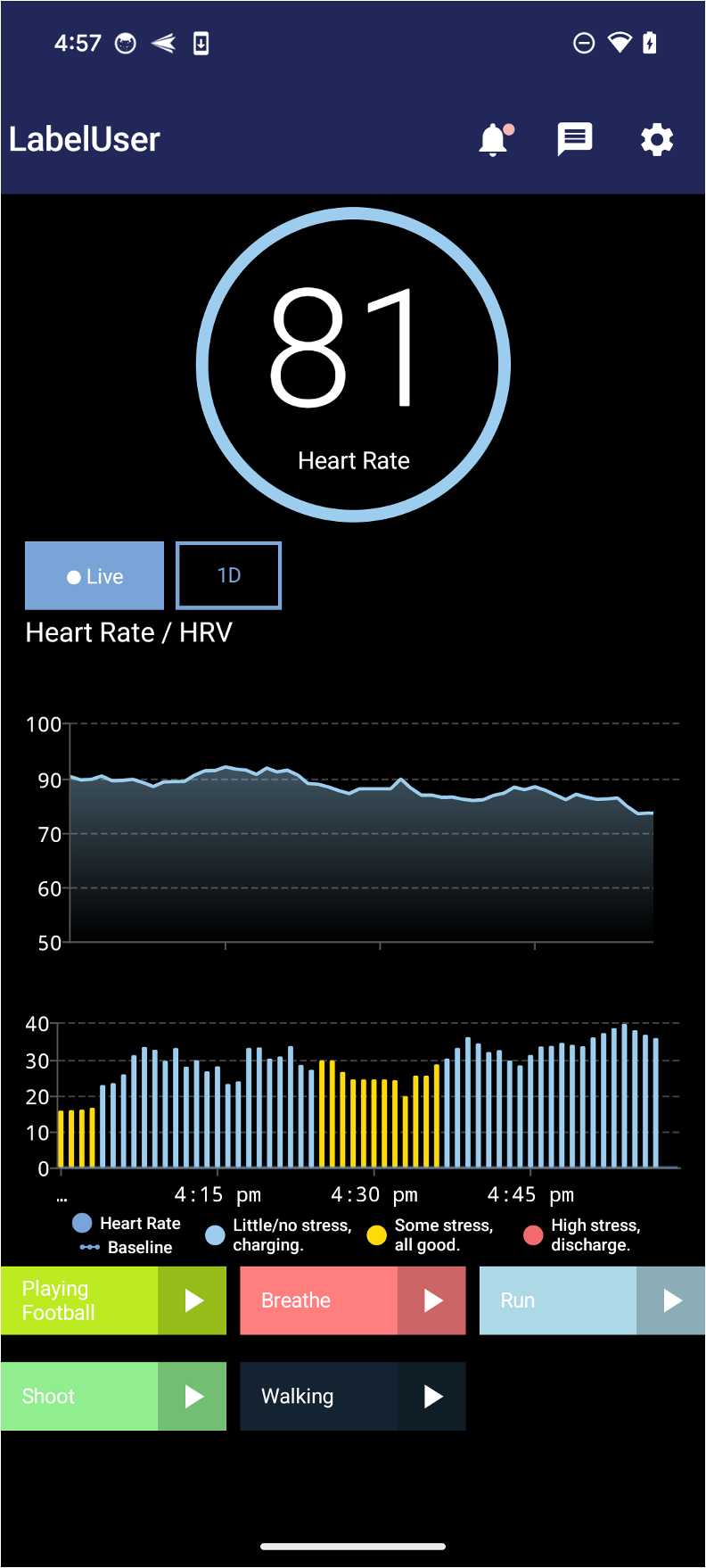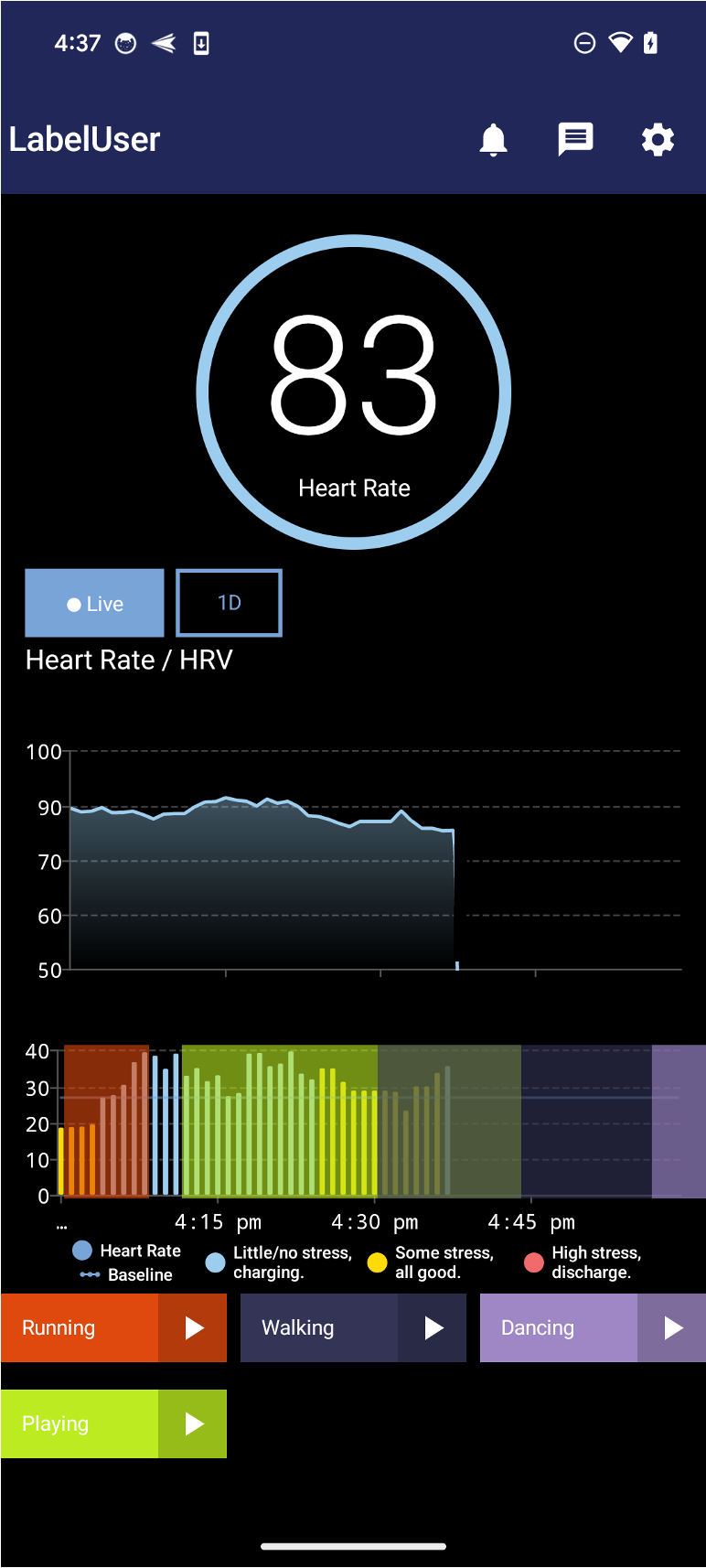
Understanding HRV
Heart Rate Variability (HRV) measures the variation in time between consecutive heartbeats. It reflects the balance between the sympathetic (fight-or-flight) and parasympathetic (rest-and-digest) branches of the autonomic nervous system (ANS). Unlike heart rate, which focuses on beats per minute, HRV focuses on the millisecond fluctuations between heartbeats, revealing the adaptability of the nervous system to physiological or environmental changes.
Key Concepts in HRV
- High HRV: Indicates a flexible, healthy autonomic nervous system. It is associated with recovery, resilience, reduced stress, and optimal performance.
- Low HRV: Suggests stress, fatigue, or compromised health, potentially due to physical strain, mental overload, or chronic conditions.
- Frequency Domains: Time-domain measures (like RMSSD) and frequency-domain metrics (like LF/HF ratio) provide insights into parasympathetic and sympathetic activity.
Researchers have found HRV to be a reliable, objective marker for physical and mental well-being, with applications in:
- Performance optimization: Tracking recovery and readiness in athletes.
- Stress management: Real-time stress detection and biofeedback.
- Health monitoring: Predicting cardiovascular risk, chronic disease management, and mental health assessments.
AI and HRV: A New Frontier
Integrating Artificial Intelligence (AI) with HRV analysis opens a wealth of new possibilities, thanks to AI’s ability to handle complex data patterns and make predictions. AI enhances HRV-based solutions by personalizing recommendations, identifying trends, and automating real-time responses.
Potential Applications of AI-Enhanced HRV
1. Burnout Prevention and Stress Detection
- AI models can detect subtle stress patterns in HRV data, allowing early interventions before burnout symptoms manifest. Platforms like Seren leverage this combination for workplace wellness, ensuring proactive stress management.
- AI-driven algorithms can auto-detect stress recovery windows, giving personalized feedback on when users are most productive or need rest.
2. Predictive Health and Chronic Disease Management
- Machine learning algorithms trained on HRV data can identify early signs of cardiovascular disease or metabolic disorders, predicting potential health risks before clinical symptoms appear.
- AI-powered wearables use continuous HRV monitoring to adjust treatment plans in real-time, offering personalized health interventions.
3. Performance Optimization in Sports and Tactical Professions
- AI-enhanced HRV tracking helps athletes and first responders optimize recovery cycles by understanding when the body is most ready to perform. Predictive insights enable adaptive training or mission planning.
- For tactical teams like law enforcement or military units, predictive HRV models improve decision-making under high-pressure scenarios.
4. Adaptive Biofeedback and Behavioral Interventions
- AI can provide dynamic feedback loops during meditation or breathing exercises, adapting based on real-time HRV trends for maximum relaxation effects.
- Personalized behavioral coaching, integrated with HRV and AI, offers users micro-interventions—like reminders for short breaks or breathing techniques—based on detected stress trends.


Future Directions
The future promises advancements like integrating HRV data with other physiological markers (e.g., sleep, movement) to enhance predictive capabilities further. AI will also enable new real-time feedback mechanisms—transforming HRV into a key component of preventive care, wellness, and performance solutions across industries. Platforms like Seren are already leveraging these synergies, paving the way for a new era of personalized health and performance management.
In summary, the convergence of HRV and AI is a game-changer in wellness, healthcare, and performance fields. With predictive, real-time capabilities, these systems are poised to unlock deeper insights into human physiology, transforming how stress, health, and recovery are managed on both individual and organizational levels.
For more literature and citations and their summaries please click here.
Our White Papers
-
Testing the impact of physiological stress response on police performance during critical job tasks
This white paper is for Testing the impact of physiological stress response on police performance during critical job tasks
Key Research Links
Heart Rate Variability (HRV) is a valuable tool for assessing autonomic nervous system function and overall cardiovascular health. Its practical applications span various fields, including sports science, clinical medicine, and mental health. Here are ten notable scientific papers that explore the practical applications of HRV:
-
A Review of Methods and Applications for a Heart Rate Variability Analysis
This comprehensive review discusses various HRV analysis methods and their applications in understanding cardiac autonomic function.
-
Practices and Applications of Heart Rate Variability in Endurance Athletes
This paper explores the use of HRV in monitoring and enhancing athletic performance, particularly among endurance athletes.
-
Heart Rate Variability: Technique and Investigational Applications in Cardiovascular Medicine
This article delves into HRV measurement techniques and their investigational applications in cardiovascular health assessment.
-
An Introduction to Heart Rate Variability: Methodological Considerations and Clinical Applications
This paper provides an overview of HRV, including methodological considerations and its clinical applications.
-
Heart Rate Variability Applications in Strength and Conditioning: A Systematic Review
This systematic review examines the application of HRV in strength and conditioning, highlighting its role in monitoring training adaptations.
-
Functional Assessment of Heart Rate Variability: Physiological Basis and Practical Applications
This article discusses the physiological basis of HRV and its practical applications in various health assessments.
-
Heart Rate Variability Methods and Analysis in Sports Medicine and Exercise Science
This paper reviews HRV analysis methods and their applications in sports medicine and exercise science.
-
Biofeedback and Heart Rate Variability: A Critical Review of the Literature
This review critically examines the use of biofeedback in HRV modulation and its therapeutic applications.
-
Heart Rate Variability: Standards of Measurement, Physiological Interpretation, and Clinical Use
This foundational paper sets the standards for HRV measurement and discusses its physiological interpretation and clinical applications.
-
The Five Health and Fitness Numbers That Actually Matter
This article highlights the importance of HRV among key health and fitness metrics, discussing its practical applications in personal health monitoring. (GQ) These papers collectively provide a thorough understanding of HRV’s practical applications across different fields, from athletic performance monitoring to clinical diagnostics and research methodologies.
